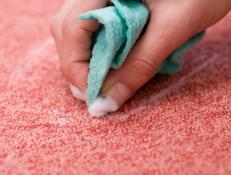DIY Demolition
Everybody likes demolition. Or maybe I should say everybody likes the idea of demolition. On the surface, demo is blunt-force fun, uses gross motor skills and delivers almost instant gratification. How cool is that!
But thoughtless destruction can easily and all too quickly result in unintended consequences by seriously compromising your home's core structure or the core structure of your life. Below are some general guidelines to note before tearing into that closet, bathroom or falling-down deck you're just aching to get rid of.
Structural Versus Nonstructural
I discourage anybody without a lot of renovation experience from tearing into anything structural. If demo requires moving, altering or otherwise futzing with a bearing wall, header, post, beam, lintel, footing or a building full of these, you're on shaky ground. Here's a good rule of thumb: If you can't identify these things, you most certainly shouldn't remove them.
You may be saying to yourself, "Does he think I'm an idiot? Who would remove those things?"
Lots of people. The last house I renovated was missing a Lally column—a structural steel post–that had been removed from below the house's main beam. The house sank a few inches, enough that the doors needed to be stripped back to the framing and to have the jambs rebuilt and then rehung. That's a lot of doors. Oh, and I put in a new post.
Not every part of a house is load-bearing, and generally you can remove those that aren't yourself. The key is to be able to tell between bearing and non-bearing.
A rule of thumb for walls is that most—not all—non-bearing walls run parallel to the joists. Stud walls in basements are typically non-bearing, too (the foundation typically carries the floor system). Posts and headers are almost always bearing structures.
If you're stripping trim, tearing out kitchens or baths, removing wallpaper or drywall, taking up flooring or breaking out an old concrete stoop, it's a safe bet that the building won't collapse. If, however, you're disturbing lead paint or asbestos, there are laws about how it should be handled in your area. Be especially careful with asbestos—it's gnarly stuff.
Smart Versus Crazy
Lots of do-it-yourself demo jobs are "easy" in the sense that they require more sweat than brain power, and that's why they become appetizing to your adrenal and "crowbar" glands.
Stripping roofing comes to mind. But if the last time you climbed a ladder was never, or the first time you climbed a ladder was to look at your roof and determine that it needed repair, I would highly discourage attempting to strip it. Indeed, lots of people get hurt by introducing their aluminum extension ladders to electrical lines—before they even get to the roof.
Walking a roof or managing ladders isn't rocket science, but it's a long way down if you make a mistake. And if you're partway through and decide this work isn't for you, your home is left vulnerable to the weather. This qualifies, at least where I live, as not good.
And not good is the opposite of what we're trying to accomplish.
Water, Electrical, Gas and Mold
If you're trashing out your bathroom, laundry room, kitchen or another area with utilities running into it, think about those before wreaking your wrecking havoc.
Driving the claw of a crowbar into old plaster sounds like a rockin' time—until you puncture a water-supply line, slam into a cast-iron drain stack or cut through an electrical feed. These can usually be shut off before you start the destruction (except the drain line, of course), which I recommend doing. If you can't shut them off, you can usually work around them. The key is to be slow, methodical and mindful that they're there.
As for fiddling with natural gas, I leave this solely in the hands of a pro (a plumber, usually). There's too much that can go wrong.
And as for mold, that's a tricky one. Some mold-infected stuff you can demo yourself and some you can't. According to mold experts, some molds can infect your entire house if you disturb the spores. The best thing to do is to call a mold-remediation expert and get a recommendation.
Long story short: Be careful, be smart and work within your—and your house's—means. Following is a general list of jobs I'd recommend that a DIYer tackle and jobs I'd suggest handing off to the pros.
DIY Demo Jobs I'd Tackle
- Decks lower than 6 feet in the air
- Drywall
- Kitchens
- Baths
- Wallpaper
- Trim and doors
- Windows—if you can reach them safely
- Landscape features
- Small trees and bushes
- Some mold
Jobs I'd Turn Over to a Pro
- Roofing and siding
- Decks more than 6 feet high
- Natural gas
- Asbestos, lead and some mold
- Landscape structures such as garages and sheds
- Anything over one story
- Electrical
- Plumbing
- HVAC
Mark Clement is a remodeler and author of The Carpenter's Notebook and The Kid's Carpenter's Workbook, Fun Family Projects! Find out more at www.TheCarpentersNotebook.com.













































